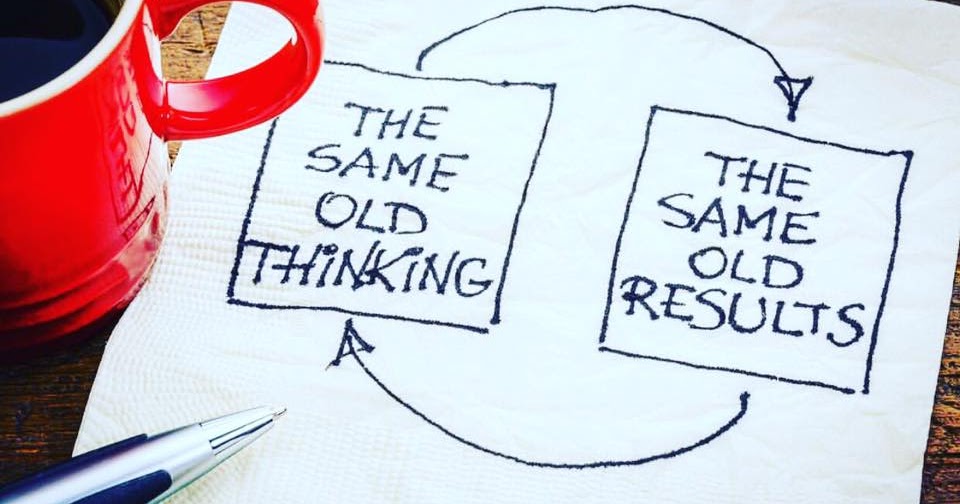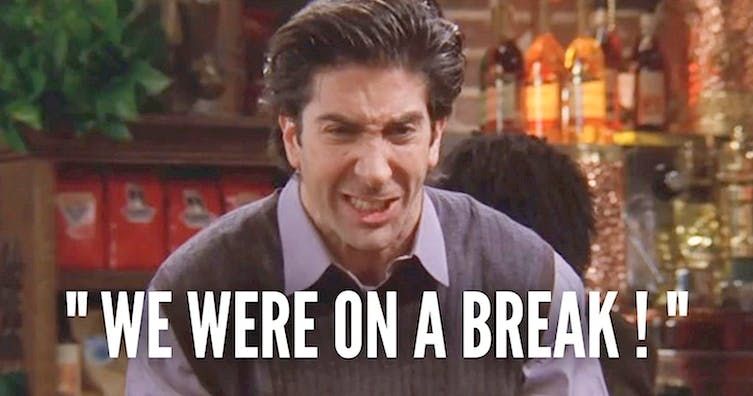Negative Automatic Thoughts Part II: Why Ross was wrong
“If you realised just how powerful your thoughts are, you would never think a negative thought.”
Peace Pilgrim
If you are unfamiliar with what a negative automatic thought (NAT) is, go back to our last post and all will be explained…..You definitely didn’t go back so here’s a short summary: We should not underestimate the influence our thoughts have on our lives. Just think about how much we think every day. We probably spend 99% of our waking adult lives thinking, but yet we are never educated on what is healthy and unhealthy thinking. If we develop unhealthy thought patterns, we begin seeing the world in a negative light and carrying out unhelpful behaviours. Thoughts lead to behaviours, which then influence how we feel. Therefore, we need to be aware of our thoughts so we can catch the unhelpful ones. This post is going to speak about the negative automatic thought of jumping to conclusions.

Fortune telling/Jumping to conclusions
We start with one of the most common NATS that we all do from time to time and that is jumping to conclusions or fortune telling, which was perfectly spotlighted in the popular tv series ‘Friends’. More specifically, Ross, Rachel and their infamous break. For anyone not familiar with this (how the hell are you not familiar with this!?), Ross and Rachel, who are in a relationship have a fight and they decide to go on a break. This leads to Ross sleeping with another girl and 20 years on, there are still arguments if he was in the wrong. From the cognitive behavioural perspective, he is. Ross fell weak to the NAT of jumping to conclusions, whereby he assumed a break meant seeing other people.

Jumping to conclusions is the process of assuming an ambiguously emotional situation will be negative for you. This occurs on the basis of our ancestors needing to make a quick decision. For example, is this person is a friend or a foe. If we were to deliberate for long periods of time, we could be killed, so we had to jump to conclusions. However, it’s not that relevant today. This is particularly prevalent among anxiety disorders and it can ruin our health and relationships. If we constantly make assumptions about ourselves, others and the future without seeking more information, then it can prevent us from living a fulfilled life. It will stop us experiencing the rainy festival, meeting that stranger who becomes our best friend or not attaining a fully lived life. In a world that’s full of information, our laziness to get the full picture prevents us from making informed decisions.
Gossip: The home of conclusion jumping

While gossip has always existed, social media has allowed it to evolve. It has legitimised judgement. That girl posted an image half naked so it must mean she is a slut. That guy took a picture with guys shorter than him so he must be conscious about his height. Gossip is the garden where jumping to conclusions grows. For parents and teachers out there, secondary school is an arena of conclusion jumpers because you are judged for what you wear, who your friends are and what you like; There are groups everywhere. He’s a goth, she’s an academic, he’s an athlete. Additionally, adolescents’ frontal lobes aren’t fully developed so they struggle to see the bigger picture. They make assumptions and make even more mistakes: A recipe for disaster!
How to stop jumping to conclusions
So how can we stop jumping to conclusions? Let’s start with perspective taking. Theory of mind is a term in psychology that refers to understanding that other peoples’ mental states might differ to yours. By being more aware of others’ point of view, we can investigate alternative ways that an event could unfold. Furthermore, Hellen Waller and colleagues from Kings College London promote the use of seeing the bigger picture in non-emotional situations. The more times we look at different perspectives and pictures of a situation, the more we train our brains to move away from the negative automatic thought. This leads us to ask what are the chances of my assumption actually happening.
Another study by James Hurley and colleagues (2018) found that those with clinical disorders who jumped to conclusions showed belief inflexibility. Therefore, they were unable to change their beliefs with the introduction of new information. Therefore, this is attached to a need to be right. If you do jump to conclusions, it is important to admit that you are wrong. The NAT of jumping to conclusions combined with refusal to admit you’re wrong can have detrimental effects on our mental health. And lastly, stop gossiping and do not promote it. If you remove gossiping from your life, you slowly kill the seed of jumping to conclusions. Don’t believe everything you hear and pay more attention to what you see. Look at the bigger picture, take in as much evidence as you can and develop more informed opinions. If we can start teaching people this from a younger age, then we can train them to be more aware of biases and make less judgements. When we stop making judgements, we stop anticipating judgements from other people. We look at the bigger picture and we stop making assumptions. If only Ross read this!
Yours Sincerely,
The Motus Movement.